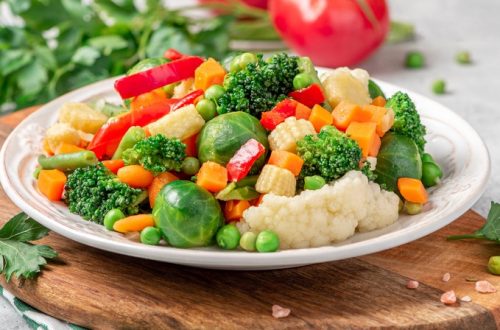
Learning to Love What You Don’t Like
On a recent restaurant visit for a plate of sushi, a discussion arose about why pickled okra was acceptable to our palates, but other forms of cooked okra were not. Our server responded with a discussion about his picky-eater niece. That evolved into a question: What is it about food that you don’t like or avoid eating and what can you do about it?
Turns out food aversion is a normal human experience, especially among pregnant women and children, but it’s also deeply personal and often comes with a back story. For many, it’s liver or rhubarb. I have a sibling who can’t eat pork and beans, perhaps because our mother had craved them when she was pregnant. I confess that I didn’t eat Indian cooking for 30 years because I had gotten sick after eating “Indian food” at a church supper. With some prompting, I visited an excellent Indian restaurant, took a forkful of lamb vindaloo, and the rest is history.
Sometimes, developing an affinity for food you never liked, like broccoli, is as simple as cooking it al dente and serving it tossed in a little mayo or olive oil. Brussels sprouts can be much tastier when cooked in bacon with a squeeze of lime. A lot of people detest kale, but it can be much more palatable when tenderized before tossed in a salad or sautéed in garlic and lemon. And given the fact that good nutrition depends on eating roughage and consuming a variety of proteins, vitamins, and minerals, a broad appetite is a good thing. You might never have liked legumes, but maybe you want to migrate to more of a plant-based diet.
Why are we grossed out by some food?
What’s happening is that your brain is telling your body – for a number of reasons – that a particular food is inedible. Take liver, for example: it looks awful when raw and has a bloodlike flavor because of the high iron concentration. As a result, your body reacts negatively by feeling nauseous or gagging at the sight, scent, or taste of the food. The Cleveland Clinic says the exact cause is unknown, but some studies suggest that it’s the result of hormonal changes or changes in sensory processing. Some 70% of pregnant women experience some food aversion due to hormonal changes, the same hormones that are responsible for morning sickness.
Why are some kids such picky eaters?
As for children, they sometimes won’t eat foods with a specific texture, smell, taste, or color, but it is also often a phase that they grow out of. The cause is more often a rejection of foods that are new, unknown, or related to a previous difficulty (such as an upset stomach or illness). That’s why doctors often recommend not eating your favorite foods when you’re sick.
Most of us have gone through a phase called “picky eating,” which differs from food aversion. The latter is tied to a sensory problem, a behavioral issue, a traumatic experience, or a physical issue. Sensory causes are most common and range from the texture of foods or how foods sound when eaten. Sometimes, physical problems such as food allergies, intolerances or sensitivities, or gastrointestinal symptoms can lead to avoidance of certain foods.
How can you conquer food aversion?
Overcoming food aversion can start with eating in a comfortable environment and eating foods that others around you enjoy (“Mikey likes it!”). As for foods that cause aversion, build off familiar foods with similar shape and sizes and gradually add the food you’re averse to. If you’re averse to blueberries, for example, chop up a few and add them to a bowl of your morning oatmeal and then gradually increase the amount of blueberries. Thus you get a similar taste, smell, and texture.
For grownups, the routine may be to begin sampling new foods and eating them with family and friends. One food writer simply kept eating foods he disliked until his palate gave up. Turns out when you ingest something, a cascade of hormones are released, and your blood glucose changes, which has metabolic effects on the ways your brain represents flavor. In short, when you eat something with a novel taste, the next time you try it, you’ll find it more pleasing, and you’re likely to eat more of it.
In serious cases, people with food aversion may need to consult with a physician, but that’s above my pay grade.
Changing food preferences is a normal human experience. However, when “picky eating” negatively impacts physical or emotional well-being, it might be time to dig deeper into its triggers.
Since food aversion has varied causes, interventions and their intensities will be different for everyone. Education and support about this condition can help ensure safe treatment and empowerment for cultivating a more positive connection with food.
And what about that okra? Pickling removes the “slimy” effect of cooked okra that some people object to. And there are lots of other delicious ways to cook okra – like deep frying in hot oil, roasting it with olive oil and sea salt, or cooking low and slow for a creamy texture.





One Comment
Tom+Stites
Don’t forget gumbo when it comes to okra. Just hearing the word fills my nostrils with the aroma of the cooking of my maternal grandmother, who grew up near the Mississippi River in Louisiana. I am in the grip of yearning as I type this.
I’m also remembering the deep-fried okra at Redbones Barbecue in Somerville, Mass. Yum.